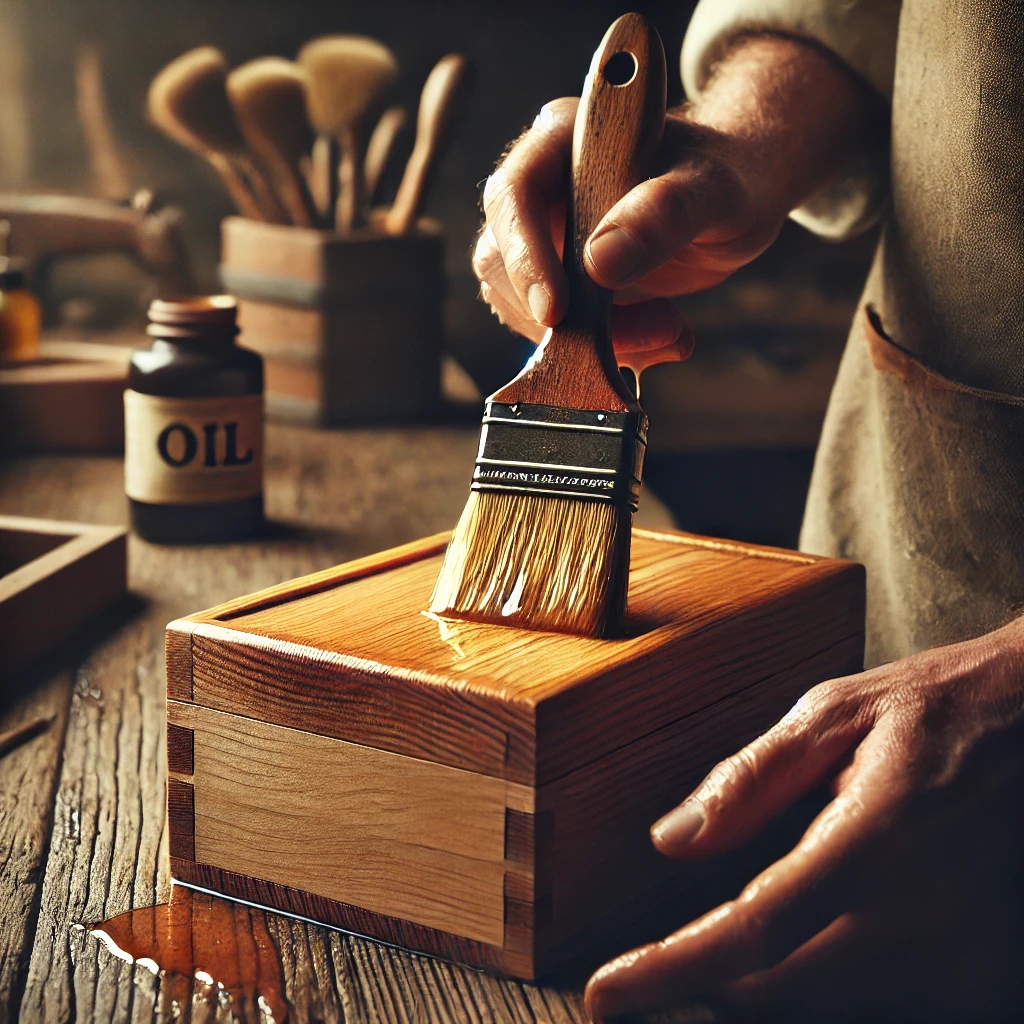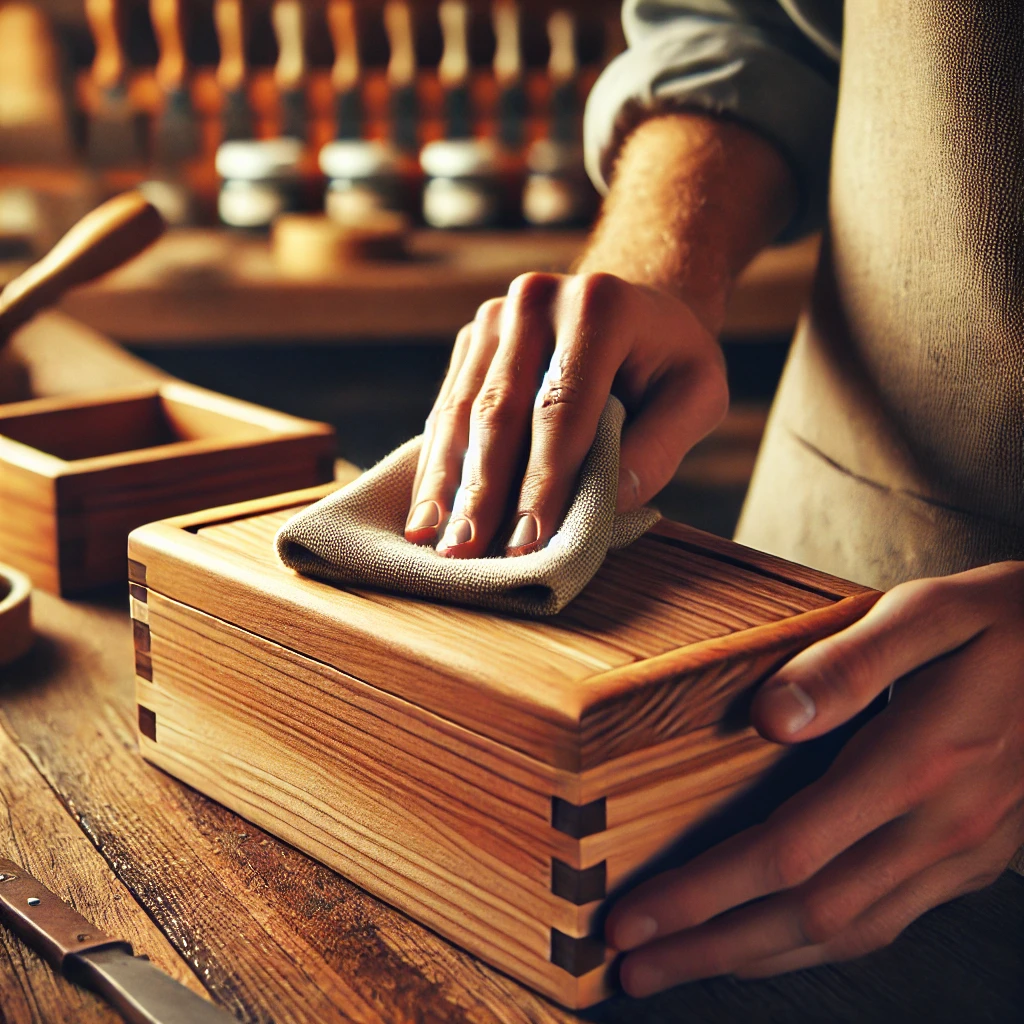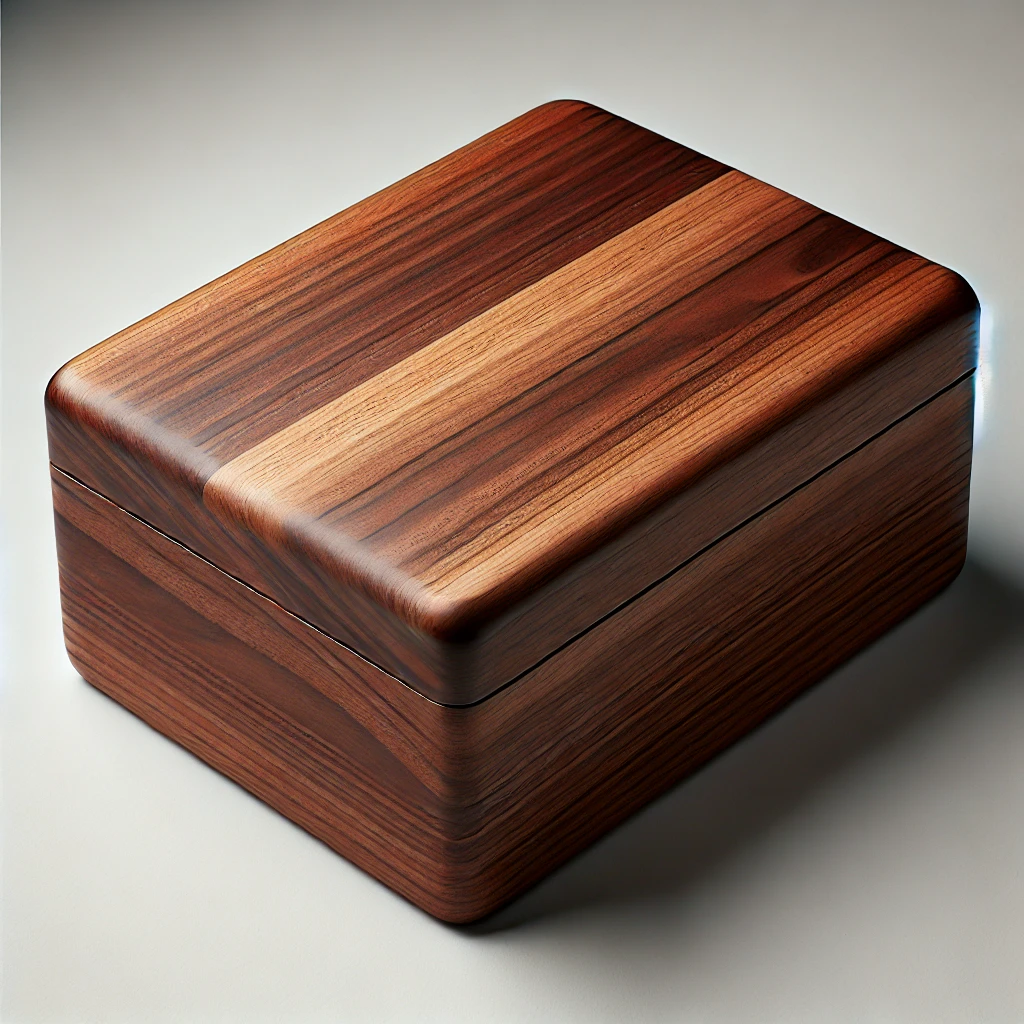
Wooden boxes require proper surface treatments to enhance their durability and appearance.1 Understanding the various finishes and techniques is essential for lasting results.
Snippet paragraph: Learn about the different surface treatments for wooden boxes, including finishes and sealers that protect and beautify the wood.
Let’s explore the key methods for treating wooden surfaces to make your boxes more durable and visually appealing.
What are surface finishes for wood?
Surface finishes are applied to wood to improve its appearance and protect it from damage. They include oils, stains, varnishes, and lacquers.
Snippet paragraph: Wood surface finishes enhance appearance, durability, and resistance to wear, moisture, and chemicals.
 !
!
A surface finish on wood serves two major purposes: aesthetic enhancement and protection. The primary types of finishes for wooden boxes are oil-based, water-based, and solvent-based finishes. Each type has its own set of advantages and disadvantages. For example, oil-based finishes provide a rich, deep color while offering great water resistance, but they tend to dry slower. Water-based finishes, on the other hand, dry faster and are less toxic, but they may not offer the same depth of color. Solvent-based finishes provide durability but can emit strong odors. To make an informed decision, it’s important to consider the environmental impact, drying time, and the desired look.
Common Surface Finish Types
| Finish Type | Advantages | Disadvantages | Best Use Case |
|---|---|---|---|
| Oil-based | Rich color, durable | Slow drying, yellowing over time | Antique look, moisture resistance |
| Water-based | Fast-drying, low odor | Less depth, may raise wood grain | Quick application, low toxicity |
| Solvent-based | Durable, glossy | Strong odor, harmful chemicals | High-performance use in industrial applications |
How to preserve wooden boxes?
Preserving wooden boxes involves maintaining their natural beauty and preventing damage over time. Proper care and treatment can extend the life of your wooden boxes.
Snippet paragraph: Proper preservation techniques for wooden boxes include regular cleaning, sealing, and using the right finishes to protect against moisture and wear.

Preserving wooden boxes requires a combination of maintenance and surface treatment. 2The first step is to keep them clean. Dust and dirt can scratch the surface, leading to long-term damage. Use a soft, damp cloth to wipe them down regularly. In terms of protection, applying a high-quality sealant is crucial to prevent moisture from seeping into the wood. Moisture can cause wood to warp, crack, or develop mold. You should also store wooden boxes in dry, well-ventilated areas to avoid any environmental damage. Treating your wooden boxes with natural oils, like linseed or tung oil, can also help to preserve their finish while enhancing the texture of the wood.
Key Tips for Wood Preservation
| Tip | Description |
|---|---|
| Clean regularly | Dust and dirt buildup can damage surfaces over time. Wipe down wooden boxes frequently. |
| Seal with a finish | Use a protective coating to prevent moisture damage and enhance durability. |
| Avoid direct sunlight | Prolonged exposure can cause wood to fade and crack. |
| Keep in a dry area | Moisture can warp and damage the wood. Proper storage is essential. |
What is the best protective coating for wood?
The best protective coating for wood depends on the wood type and the intended use. Protective coatings enhance durability and maintain the wood’s appearance.
Snippet paragraph: Choose protective coatings based on wood type and usage. Options include varnish, polyurethane, lacquer, and oil finishes.

"Protective coatings are vital for maintaining the integrity of wooden boxes. For high-traffic areas or outdoor use, a durable finish like polyurethane 3 is often recommended. Polyurethane is known for its tough, water-resistant properties. Varnish4, while also durable, provides a more natural look and is ideal for indoor wood furniture. Lacquer5 is a thinner coating that dries quickly and provides a shiny finish, but it may not be as durable as varnish or polyurethane. For those seeking a more natural, eco-friendly option, an oil finish (like tung oil 6or linseed oil7) is perfect. It nourishes the wood, providing a subtle sheen while keeping the wood breathable and moisture-resistant.",
Best Coatings for Different Uses
| Use Case | Recommended Finish | Pros | Cons |
|---|---|---|---|
| Indoor furniture | Varnish | Natural look, durable | Takes longer to dry |
| High-traffic areas | Polyurethane | Tough, water-resistant | Glossy finish |
| Outdoor wood | Polyurethane, Oil | Weather-resistant | May require reapplication |
| Decorative items | Lacquer | Quick drying, glossy | Less durable |
How do you seal a wooden box?
Sealing a wooden box protects it from moisture, dirt, and wear. Sealing is an essential step to ensure the longevity of wooden items.
Snippet paragraph: Sealing wooden boxes involves applying a protective coating to lock moisture and dirt out, ensuring lasting durability.
Sealing a wooden box is one of the most important steps in protecting it. The process involves applying a sealant that fills the pores of the wood, creating a barrier against moisture, dirt, and other damaging elements. Before sealing, ensure the wood is clean and dry. For a natural look, you can use oil-based finishes8 or a clear polyurethane. To apply the sealant, use a brush or cloth, working the finish into the wood along the grain. For best results, multiple coats should be applied, allowing each to dry thoroughly before adding the next. Sanding lightly between coats can improve the smoothness of the finish.
Steps to Seal a Wooden Box
| Step | Action |
|---|---|
| 1. Clean the surface | Remove dust and dirt. Ensure the surface is dry before application. |
| 2. Apply a thin coat | Use a brush or cloth to apply the finish along the grain. |
| 3. Let it dry | Allow the first coat to dry completely. |
| 4. Apply additional coats | Apply 2-3 coats for the best protection, sanding lightly between each. |
What are the 3 types of finishes?
The three main types of wood finishes are penetrating finishes, surface finishes, and film finishes. Each type offers unique benefits.
Snippet paragraph: Wood finishes fall into three categories: penetrating, surface, and film finishes, each providing different levels of protection and appearance.

Understanding the three main types of finishes is key to selecting the right treatment for your wooden boxes. Penetrating finishes include oils and stains. These finishes soak into the wood, providing deep nourishment and color while maintaining a natural look. Surface finishes, like varnish and lacquer, form a protective layer on top of the wood, offering higher durability against scratches and moisture. Finally, film finishes like polyurethane create a hard, protective coating that acts as a shield, ideal for high-traffic or outdoor use. The choice of finish depends on the desired appearance, durability, and environmental factors.
Types of Finishes at a Glance
| Finish Type | Description | Ideal Use |
|---|---|---|
| Penetrating | Absorbs into the wood, enhancing texture | Indoor furniture, decorative items |
| Surface | Forms a protective layer on top | High-traffic areas, moisture protection |
| Film | Creates a hard, protective shell | Outdoor wood, high-durability needs |
Conclusion
Surface treatments and finishes are crucial for maintaining the durability and appearance of wooden boxes. The right finish protects the wood from moisture, wear, and environmental damage. Choosing the best finish depends on factors like wood type and use—polyurethane for high-moisture areas and oils for indoor decor. Proper application ensures longevity and preserves the wood’s natural beauty. With the right care, your wooden box will remain durable and attractive for years to come.
-
Learn about the different types of surface treatments and finishes for wooden boxes. ↩
-
Learn about sealants to prevent moisture and protect wood from damage. ↩
-
Learn about the benefits and uses of polyurethane for long-lasting wood protection. ↩
-
Understand the advantages of varnish for enhancing wood furniture while maintaining a natural look. ↩
-
Discover the differences between lacquer and other wood finishes for your wood preservation. ↩
-
Find out how tung oil provides moisture resistance and a natural finish for wood. ↩
-
Learn about linseed oil’s natural preservation benefits and how it enhances wood appearance. ↩
-
Learn about the advantages of oil-based finishes for providing a natural, durable seal on wood." ↩


